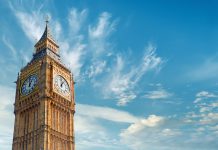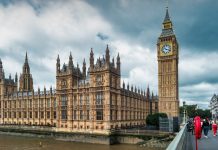The total financial cost of COVID-19 won’t be known until after the crisis is over – but we can look into the available data and piece something together
According to the National Audit Office, between April and July this year the government has already borrowed £210 billion to combat COVID-19, but according to the Office for Budget Responsibility the government, which had planned to borrow a total of £55 billion for the current financial year (April 2020 to April 2021), has now increased their estimate to a whopping £372 billion.
It should also be noted that this £373 billion estimate was made prior to the recently announced second national lockdown and whilst no further announcement has yet been made, this figure will undoubtedly increase further.
With a previously projected £900 billion in expenditure in the current fiscal year, this will mean for the first time, the UK annual expenditure will easily exceed £1.3 trillion, with a GDP projected GDP of £2.6 trillion. A simple calculation reveals spending will tip over the 50% GDP mark for the first time since World War 2.
This is further impacted when we factor in the £2.6 trillion GDP projection was pre-COVID-19 and some experts are predicting when the total financial cost is set against a significantly reduced COVID-19 GDP, we could be in the 80-85% range of GDP as government expenditure, which will be unprecedented.
Lessons from 2008
To provide some context, when the UK government bailed out the banks in 2008 they spent £500 billion and this triggered 10 years of austerity.
This has many experts very concerned, because as the UK prepares to leave the EU, many of our future prosperity and economic growth plans were based on inward investment into a vibrant, strong, newly independent market with stable tax rates, stable tax laws and fiscal stability. If there’s one thing investors do not like, it is uncertainty and the scenario detailed above creates huge uncertainty for investors.
The EU has often expressed concerns that a post Brexit UK would become a “Singapore-on-Thames”, referencing a tax and regulation haven, with much cheaper imports due to much lower tariffs in the UK than the EU.
The dilemma Boris Johnson and his Chancellor, Rishi Sunak face is which direction they will take to address these fiscal challenges. Do they stimulate inward investment and small business growth by offering tax and regulation incentives and risk being at loggerheads from day one with our EU partners, or do they go down the increased taxation and another 10 years of austerity route?
The only post COVID-19 economic recovery plan Boris Johnson has, is his Build Back Better initiative, which gives no indication either way in terms of the low tax or austerity choice. Instead it’s an expenditure or investment initiative based on increasing the UK green energy capabilities, which will create around 2,000 jobs that are expected to be filled by workers from the oil and gas sector following a huge decrease in demand due to the pandemic.
In addition to the financial cost of COVID-19 and the hard choices ahead to aid a recovery, there are also other costs which need to be taken into consideration.
Non COVID-19 related health outcomes are being increasingly cited as a reason against further lockdowns and as with Brexit the UK is now forming into two diametrically opposed factions, one for lockdowns and waiting for a vaccine to arrive, the other wanting to keep our economy open and protect the most vulnerable.
The negative impact of lockdown
Having reviewed both positions, they both have positives and negatives, but neither provides any guarantees. However, having said that, the negative impacts on mental and physical health cannot be underestimated, when weighed against the fact that NHS England recently published figures confirming only 315 healthy people under the age of 60 have died from COVID-19 in the UK since the start of the pandemic.
There is strong evidence that lockdowns could actually cause more harm than good with serious delays for cancer screening, cardiovascular treatment, children’s health, and mental health. Delays and lack of treatment will prevent early detection and intervention, which could have a lasting impact not only on millions of people, but on the very NHS the lockdowns are intended to protect. Then there is the issue of isolated elderly people where family members and friends are denied visitation rights, which on the face of it seems cruel bordering on inhumane. One report included a photograph with several elderly patients sat in wheelchairs outside a care home with signs reading “I’d rather die from COVID than from loneliness”.
Looking at it from just a common sense perspective, given the low fatality rate in the vast majority of the work and school aged population, it seems like an overreaction to shut the entire country down. It would seem a far more sensible approach would be to protect the most vulnerable and continue to use the measures already in place for the rest of us, such as masks, social distancing and regular washing of your hands.
This could help reduce the long term financial damage being done to our economy and release the pressure valve that is building with those who vehemently oppose being locked down again, who feel it will destroy their businesses, jobs and lives.
What about the other side?
The counter argument to this position is that we must protect the NHS, which whilst this is obviously a good idea, to do this at the expense of everything else, when there is no actual vaccine available and by the governments own admission, there’s unlikely to be one for several months, seems like a none solution, solution.
The government has now had several months to increase hospital capacity (which was the justification for the first lockdown) and they invested £220 million on Nightingale hospitals, only to then close them again.
Whilst the government is in an almost impossible position, in terms of keeping everyone happy, a lot of public trust has been eroded by their seemingly nonsensical, haphazard and incredibly confusing approach, which seems to change on a daily basis based on massively inflated and scary projections of doom and gloom, which in hindsight never come anywhere near to reality.
There seems to be a huge disconnect from politicians whose income and jobs are secure though this crisis, making decisions they do not have to live with or are financially unaffected by. This had led to the re-emergence of Mr Brexit himself Nigel Farage.
Love or loathe Mr Farage, I’m personally in the latter group, he has already demonstrated he has an ability to harness public unrest and anger and channel it into political pressure against our country’s main two political parties. Mr Farage along with the Chairman of the Brexit Party, Mr Richard Tice have applied to the electoral commission to rename the Brexit Party as “Reform UK” and fully intend to challenge every single seat in the May local elections.
When they did this with Brexit it forced the Conservative Party to change their policies to prevent an erosion of their power base, so maybe the simple threat of this happening again with Reform UK, may result in a rethink about destroying millions of lives and the economy based on the advice of a handful of scientific advisers, who have already got it badly wrong time and time again since this wretched pandemic first hit our shores.











